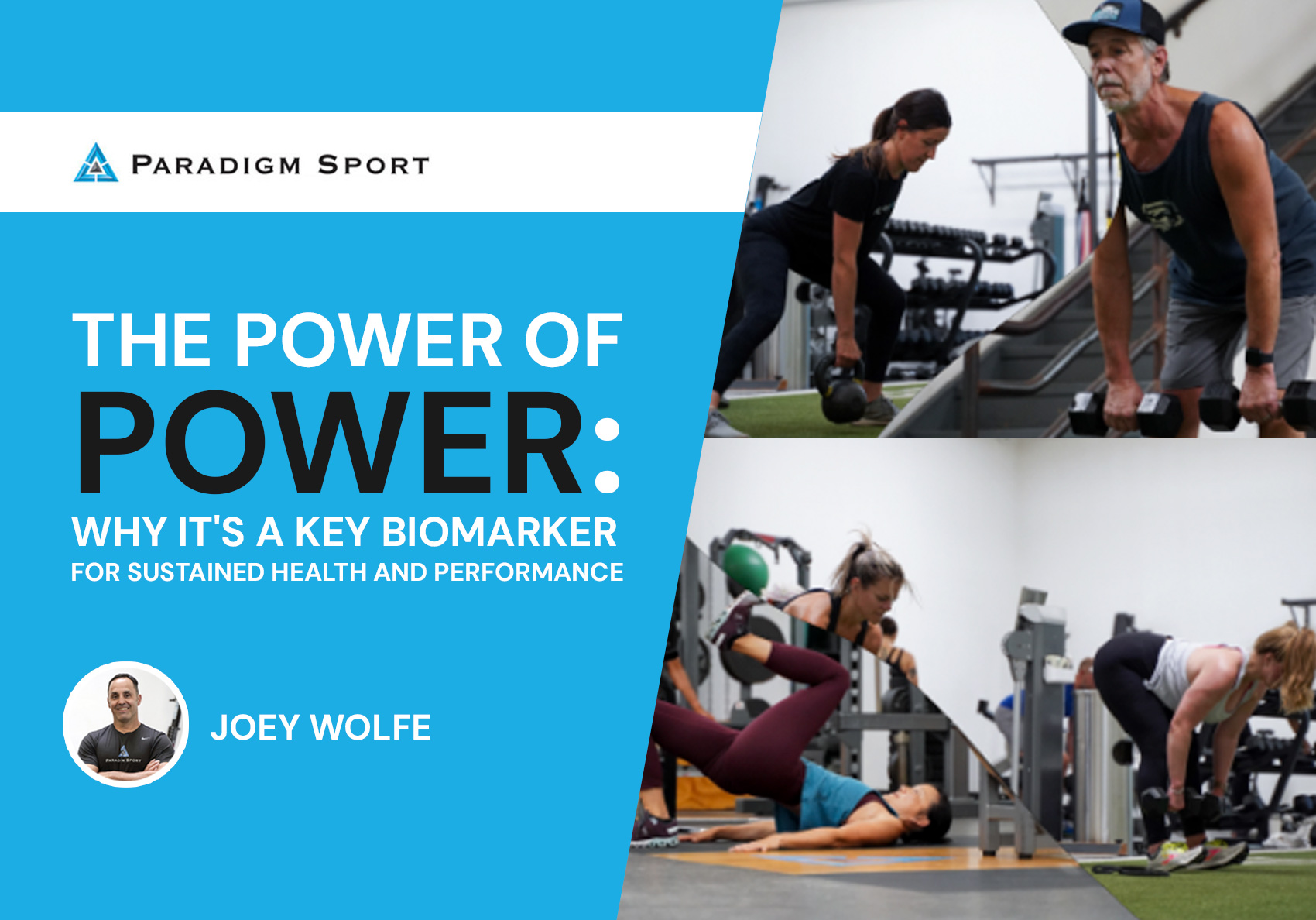
hen we talk about fitness, most people think about strength, endurance, flexibility, or cardiovascular health. But there’s another critical component of fitness that often flies under the radar: power. In the world of exercise science, power is defined as the ability to exert force quickly. It’s the explosive energy that allows you to jump high, sprint fast, or lift a heavy weight with speed. While power is often associated with athletes, it’s also an essential biomarker for sustained health and performance for everyone—regardless of age or fitness level.
What is Power?
Power is a combination of strength and speed. Imagine a sprinter exploding off the starting blocks or a weightlifter pushing a heavy barbell overhead in one swift motion. These movements require not only the ability to generate force (strength) but also to do so rapidly (speed). In everyday life, power helps you rise from a chair, climb stairs, or catch yourself when you trip.
Why Power Matters for Long-Term Health
1. Maintains Functional Independence: As we age, our muscles naturally lose strength and mass—a process known as sarcopenia. But it’s not just strength that declines; power decreases even more rapidly. This reduction in power can make simple tasks, like standing up from a chair or walking quickly, more difficult. Training for power helps combat these declines, keeping you functional and independent longer.
2. Prevents Falls and Injuries: Training power improves your ability to react quickly. If you trip or lose your balance, having a good amount of power can help you recover faster, reducing the risk of falls and injuries. This is particularly crucial as we get older, when falls can lead to serious health complications.
3. Boosts Athletic Performance: For those who are more performance-oriented, power is a game-changer. Whether you’re an endurance athlete looking to improve your sprint finish or a recreational basketball player trying to jump higher, power can take your performance to the next level. It’s the difference between being able to outpace your competition and just keeping up.
4. Improves Metabolic Health: Power training often involves high-intensity movements that spike your heart rate and burn calories quickly. This type of training can enhance your metabolic rate, improve insulin sensitivity, and help manage body weight—all of which are crucial for long-term health.
5. Supports Bone Health: Power-based exercises, especially those that involve impact (like jumping or plyometrics), stimulate bone growth and help maintain bone density. This is vital for preventing osteoporosis and maintaining a strong skeletal system as you age.
How to Train for Power
Power training doesn’t have to be complicated, and it can be adapted to any fitness level. Here are a few effective ways to incorporate power exercises into your routine:
- Plyometrics: Exercises like box jumps, burpees, and jump squats are excellent for building lower-body power.
- Olympic Lifts: Movements like the clean and jerk or snatch are classic power exercises, but they require proper technique and guidance. Here at Paradigm Coach Jeremy, Coach Reńe and Training Manager Jeff are all USA Weightlifting certified. If you are interested in learning Olympic Lifting skills and techniques we can help!
- Medicine Ball Throws: These are great for developing upper-body power in a safe and controlled manner.
- Sprint Intervals: Short bursts of sprinting followed by rest periods can significantly improve your power output.
- Proteus Motion: Proteus is the only way to measure strength and power for 100% of human movements for the first time ever. Their 3D Resistance mirrors every movement to provide constant resistance no matter what direction you move.
Power for All Ages
One of the great things about power training is that it’s scalable. Whether you’re in your 20’s and looking to boost your athletic performance or in your 60’s aiming to maintain your functional independence, power training can be tailored to suit your needs. It’s never too late to start reaping the benefits of power. Power training may look and feel different depending on what stage of life you’re in, but with the correct intention it can be beneficial for all. This is one of the reasons power work is an essential part of our small group personal training programs.
Conclusion
Power is more than just a performance metric for athletes; it’s a critical biomarker for sustained health and functional independence. By incorporating power training into your fitness routine, you can enhance your quality of life, reduce the risk of injury, and stay active well into your later years. So, next time you’re in the gym, don’t just focus on lifting heavier or running longer—think about how quickly you can move, too. Your future self will thank you.
Whether you’re a seasoned athlete or just beginning your fitness journey, we’re here to help you build power safely and effectively. Stop by our gym, and let’s work together to develop a personalized plan that fits your goals and lifestyle.
Talk soon,
Joey Wolfe


